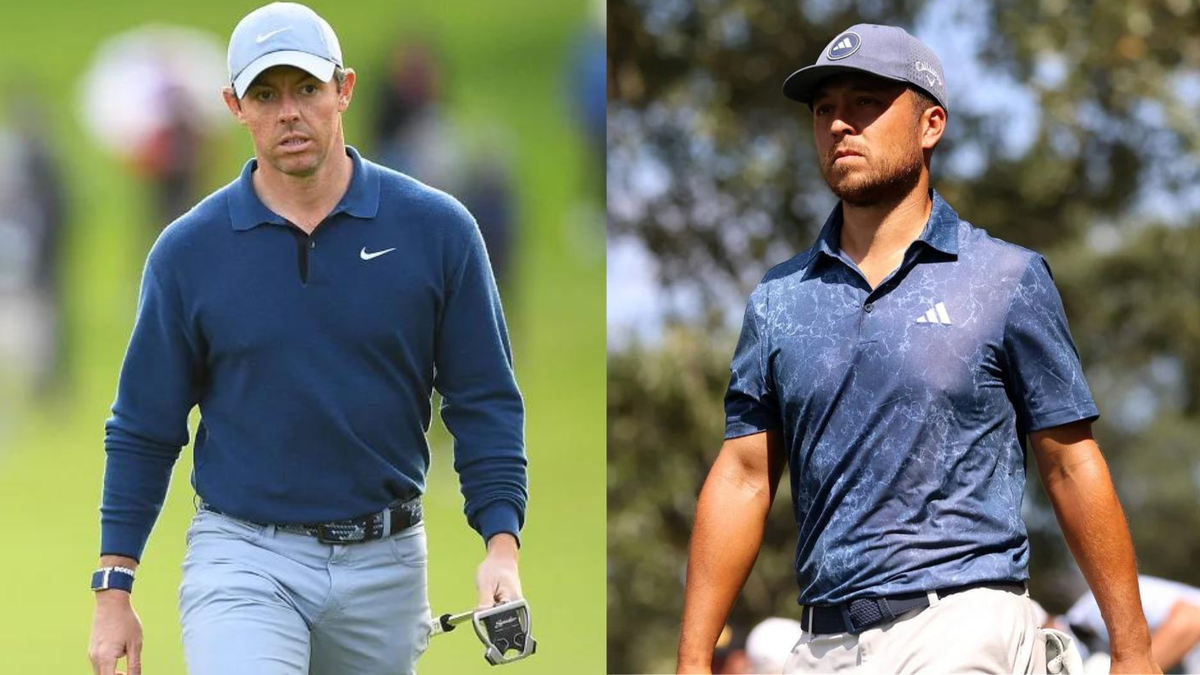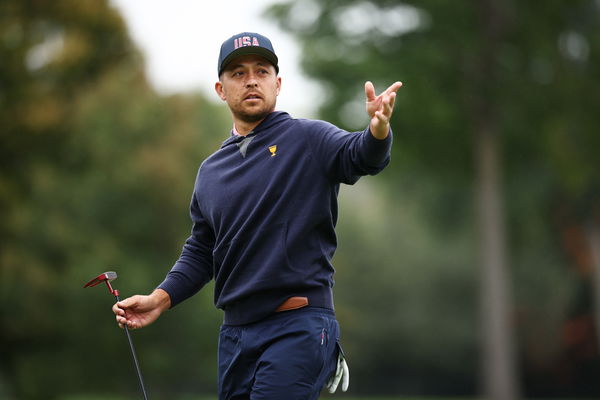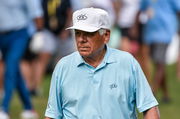
Imago
Source Credit: IMAGO

Imago
Source Credit: IMAGO
“I would gladly give up my driver if it’s not conforming. But there’s still 130 other players in the field that potentially have a nonconforming driver as well,” – a frustrated plea that golf’s governing bodies should have listened to. Instead, they let the same nightmare happen again. Just a few weeks ago, Rory McIlroy fell into the crosshairs after his driver was ruled non-conforming ahead of the PGA Championship at Quail Hollow Club. It was a story the golf community had seen before.
Watch What’s Trending Now!
Xander Schauffele stood at Royal Portrush in 2019, filled with frustration. The R&A had just deemed his Callaway Epic Flash driver illegal after random testing. Meanwhile, 130 other players avoided testing entirely. His anger wasn’t about compliance. Rather, it centered on fairness.
“I had a bit of a run-in with the R&A, which wasn’t the most fun,” Schauffele admitted after his second round. The testing process had consumed his Tuesday evening. Subsequently, he scrambled to find a replacement driver while others continued to prepare as usual. His opening round suffered dramatically. He shot 74, hitting just six of 14 fairways with his unfamiliar backup.
ADVERTISEMENT

Getty
MONTREAL, QUEBEC – SEPTEMBER 25: Xander Schauffele of the U.S. Team gestures on the 17th green during a practice round prior to the 2024 Presidents Cup at The Royal Montreal Golf Club on September 25, 2024 in Montreal, Quebec, Canada. (Photo by Jared C. Tilton/Getty Images)
The Americans’ frustration boiled over publicly. “They only test 30 players. I thought it was a little bit unfair,” he declared. Furthermore, multiple sources later confirmed his suspicions. At least two other manufacturers, potentially TaylorMade and PXG, had drivers fail the same tests. However, only Schauffele’s name became public. The R&A failed to maintain confidentiality.
“This matter should be private. But the R&A didn’t do their job in keeping it private,” Schauffele said later. Fellow players began calling him a “cheater” jokingly. Nevertheless, the damage was done. His reputation suffered an unnecessary setback due to something beyond his control.
ADVERTISEMENT
Fast forward six years to Quail Hollow. Rory McIlroy arrived at the 2025 PGA Championship facing the identical nightmare. His TaylorMade Qi10 driver failed USGA testing on Monday. Moreover, the news leaked despite supposed confidentiality protocols. The pattern repeated exactly.
The Northern Irishman’s frustration mirrored Schauffele’s exactly. “I was a little pissed off because I knew that Scottie’s driver had failed on Monday, but my name was the one that was leaked,” McIlroy later revealed. Scottie Scheffler had experienced the same fate. However, his name stayed private while McIlroy’s spread across social media.
ADVERTISEMENT
McIlroy’s performance suffered predictably. He shot 74-69-72-72 to finish T47 at +3. Additionally, his driving accuracy plummeted below 36%. Only one player performed worse off the tee. The unfamiliar backup driver clearly disrupted his rhythm. The Masters champion avoided media all week. He didn’t want to “get up there and say something that I regretted.” Therefore, speculation increased about his struggles.
The testing controversy highlighted ongoing issues with the current system. Both incidents followed the same pattern. Random testing creates unfair advantages. Confidentiality fails miserably. Star players become scapegoats. Meanwhile, the majority of competitors escape scrutiny entirely.
Top Stories
Lee Trevino, 86, Leaves Golf World Hanging on Every Word at PNC: ‘I’ve Been Digging Worms’

Paige Spiranac Shares Her Mom’s Honest Views on Controversial Career Decisions

LIV Golf Issues Statement as Pro Announces Shock Retirement After Getting Relegated

‘Losers’: PGA Tour Pro Blasts Fan Behavior After Viral NFL Arena Incident

Korean PGA Tour Star Clears the Air on LIV Golf Rumors With Blunt Message

ADVERTISEMENT
PGA Tour manufacturer minefield exposes testing flaws
Equipment companies have consistently dodged responsibility in both incidents. In 2019, PXG denied that their driver had failed the test. Meanwhile, TaylorMade declined to comment entirely. Srixon claimed all their drivers passed. Similarly, manufacturer responses remained scarce during McIlroy’s 2025 ordeal.
The CT (Characteristic Time) test measures face flexibility in microseconds. The limit sits at 257 microseconds maximum. However, normal use causes drivers’ faces to “creep” beyond legal limits. This phenomenon affects all manufacturers equally. Therefore, the random testing approach appears to be fundamentally flawed.
TaylorMade provided no public response about their Qi10 drivers failing tests for both McIlroy and Scheffler in 2025. Similarly, Callaway remained quiet about Schauffele’s Epic Flash failure in 2019. This pattern suggests manufacturers prefer damage control over transparency.
ADVERTISEMENT
Lucas Glover recently suggested players might submit backup drivers for testing instead of their “gamers.” This would circumvent the system entirely. However, there is no evidence to support such claims. Still, the suspicion highlights growing distrust around testing protocols. Players question whether the system truly ensures fairness.
The silence of equipment manufacturers creates additional problems. Players lose confidence in their tools. Manufacturers face reputation damage. Meanwhile, governing bodies appear incompetent. The documented impacts affect multiple stakeholders while companies avoid accountability.
Both Schauffele and McIlroy have called for comprehensive reform. Test everyone’s driver. Record serial numbers. Eliminate the randomness that creates unfair advantages. Six years later, the same problems persist. Golf’s governing bodies learned nothing from Schauffele’s prophetic warning. Therefore, elite players continue facing these equipment nightmares at major championships. Until governing bodies address these systemic issues, more players may face similar situations that Schauffele predicted.
ADVERTISEMENT
ADVERTISEMENT
ADVERTISEMENT
ADVERTISEMENT

